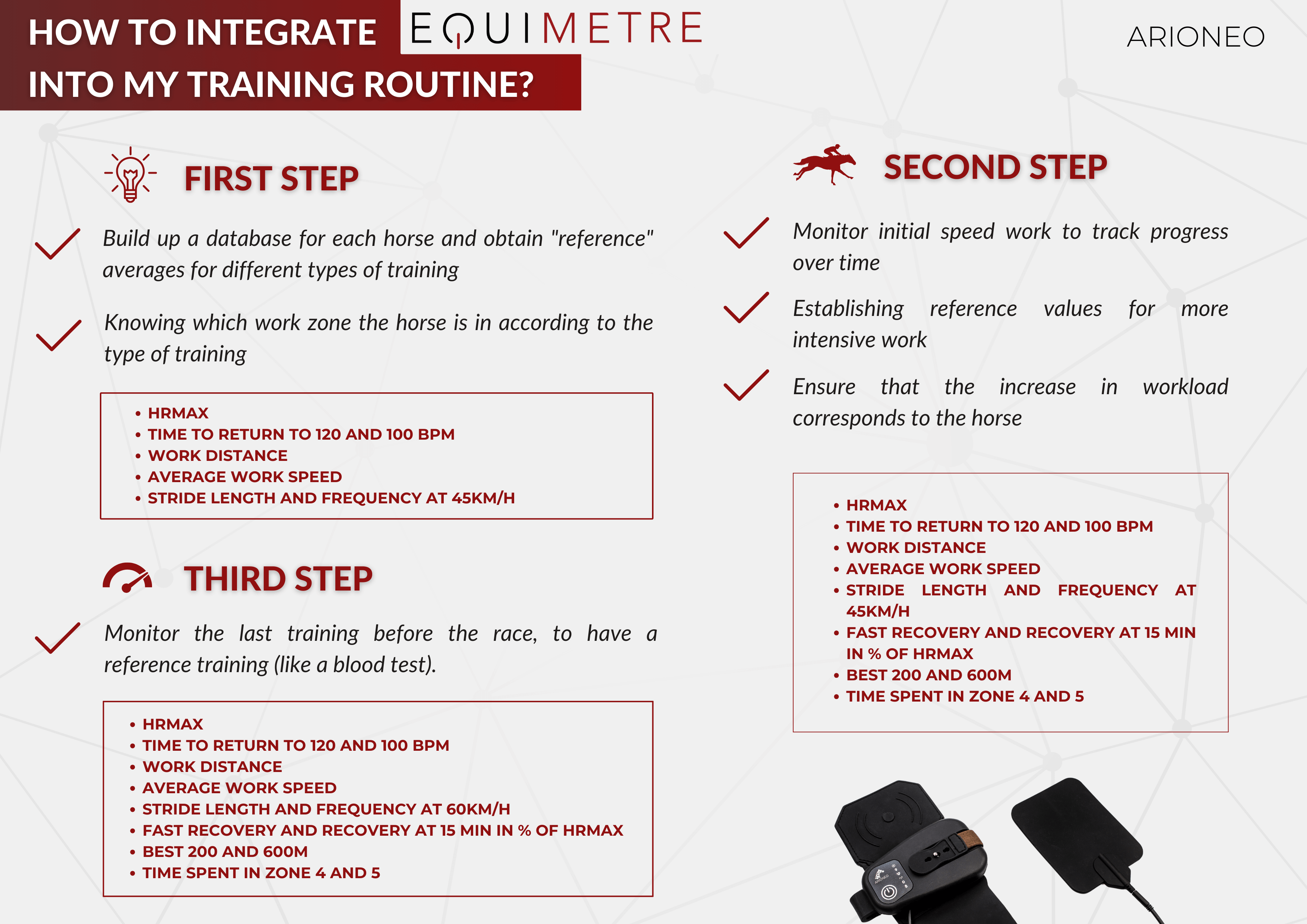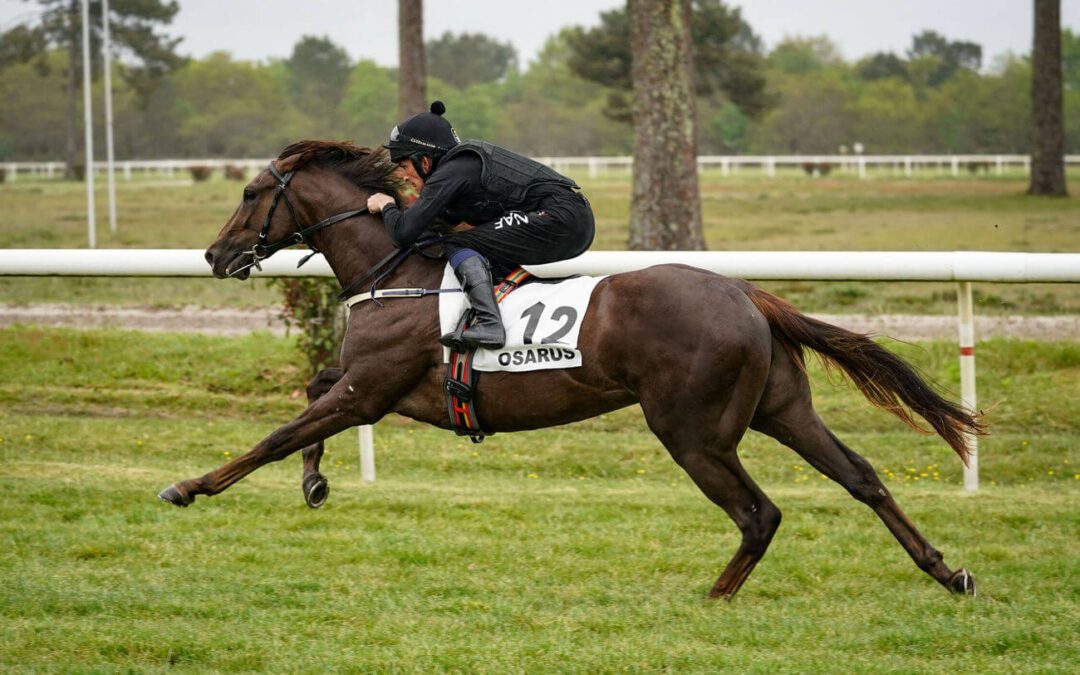Pre-training racehorses allows for optimizing their chances of success on the track. Racehorse trainers are aware of the importance of developing muscle strength, enhancing overall fitness, and conducting appropriate groundwork to maximize the performance of young athletes. As advanced technologies and data analysis methods continue to evolve, it is now possible to gather valuable information to tailor training programs, detect potential health issues, and identify performance patterns.
What is the role of data in the pre-training of racehorses? How do new data collection tools enable the transformation of the traditional approach to pre-training?
What is pre-training?
Pre-training centers are, in a way, preparatory schools for racehorses. Indeed, some owners and trainers prefer their horses to go through a pre-training center first, where they will begin their training and acquire the fundamentals in a more confined space and a calmer environment. But what does the daily life of such a stable look like?
Breaking In
Most pre-training centers also offer a breaking-in service, starting the work of young horses from scratch with groundwork, breaking in, and riding, as required by the owner/trainer’s level.
Groundwork
One of the biggest advantages of a pre-training center is the extra time they generally have compared to traditional training facilities. This allows them to dedicate more time to the groundwork. They use longeing or in-hand work, even with older and already confirmed horses, to develop balance and muscle tone before adding the rider’s weight.
Dressage
While it’s not mandatory for a racehorse to work in a specific posture, it’s becoming increasingly common to spend time teaching the horse to work in a balanced and correct manner. Laying the right “foundations” from the beginning allows the horse to develop better muscle tone, push from behind, and carry itself in a lighter and more correct way, thus reducing the risk of injuries and extending the career of a competitive horse. This also greatly aids jockeys if they have a softer hand and therefore better control!
Jumping
During this process, horses are taught to initially jump from a slower gait so they can develop better technique and greater confidence in approaching obstacles safely at faster speeds.
Physical Conditioning
A significant part of pre-training involves building a foundation of physical fitness through ground work, walks on varied terrain, and uphill work so that when the horses move on to full training, only high-speed work remains to be done.
A gradual approach to training load promotes muscle development without overburdening the horse. To learn more, we recommend reading this article on the muscle memory of the equine athlete.
Rehabilitation
Pre-training centers also undertake a lot of work with horses that have already undergone training and are now returning from an injury, typically a tendon or ligament injury or a procedure involving the spinous processes. Most centers have access to a range of therapy equipment and can also utilize hydrotherapy. Again, they use a solid foundation of groundwork to strengthen the muscles before beginning mounted work.
Rest Periods
When a horse has suffered an injury and needs to rest for a certain period, it can benefit from a ‘turnout’ service to recover and rehabilitate before being reintroduced to training and pre-training in preparation for its return to the track.
Pre-training challenges
The pre-training of racehorses presents a unique set of stakes and challenges, requiring a balanced approach and specialized expertise. Several key factors influence the success of this stage.
The major challenge lies in working with young horses at the beginning of their careers. Since these horses haven’t yet acquired the experience and maturity required to handle full training, trainers must strike a delicate balance between physical and mental development to avoid rushing the process.
To find out more about the difference between training and conditioning, we recommend this article.
Pre-training involves not only muscular and cardiovascular development but also the establishment of key skills like balance, coordination, and understanding rider cues. However, each horse is unique in terms of capabilities, strength, behavior, and sensitivity. Finding the approach that suits each horse can be a significant challenge. It’s important to be able to individualize their program based on each one’s specific needs.
This period can be stressful for horses, as they’re exposed to new experiences and different environments. Managing stress and anxiety while maintaining training progression is crucial. However, the objective remains to prepare them for the transition to a race stable. This step requires careful planning to avoid sudden overload and ensure that the horses are prepared to handle the intensity of track training.
Focus on the Advantages of the Pre-Training Profession
-> Satisfaction when young horses acquire new skills and progress in their training.
-> Being able to track the careers of successful horses that have passed through the pre-training center.
-> Witnessing the successful rehabilitation of a horse and giving them a second chance.
-> The variety of horse levels and tasks, ranging from breaking in to conditioning and rehabilitation.
-> Gaining an in-depth understanding of various areas such as breaking in young horses, conditioning, veterinary skills, the racing industry, working with yearlings, etc.
Why integrate data into pre-training?
The integration of data has become an essential element in monitoring the performance of racehorses. This modern approach provides trainers and owners with a precise and objective perspective to optimize race results.
Informed communication with owners
The use of data allows for transparent and informed communication between trainers and owners. Objective figures provide a common language to assess the horse’s progress. Owners can accurately track their horse’s performance and development, thus facilitating informed decision-making regarding the adopted strategy.
Quantifying horses’ physical abilities
Data provides a comprehensive analysis of each horse’s physical abilities. Objective measures such as heart rate, speed, distance covered, and recovery quality can be analyzed. This enables trainers to monitor progress, identify areas for improvement, and tailor the training intensity to individual horses.
How to integrate Equimetre into the pre-training of racehorses?

Pre-Training – The Equimetre Experience of Anne-Gabrielle Ansquer
Originally from the eventing world, Anne-Gabrielle Ansquer later shifted her focus to the realm of racing. She subsequently worked in various stables before establishing her own facility in 2021, set within a diverse and natural environment encompassing traditional tracks, forests, and lakes. This is how her young boarders learn their future profession in a peaceful setting, gaining adaptability and a sense of responsibility.
What challenges and objectives led you to invest in a solution like Equimetre?
The goal was to measure the impact of trotting exercises on the training and then adjust my work on the track accordingly.
During my training sessions, I’m on horseback, and there isn’t necessarily someone on the ground observing what we’re doing. Paired with the rider’s intuition, having clear and objective data is valuable.
What I really appreciate about Equimetre is the ability to analyze locomotion, especially through stride length, which is a critical parameter for us. Trotting work can help us gain centimeter by centimeter in stride length, and that could be what makes the difference in winning a race!
I also focus on the effort zone and recovery. Analyzing and tracking this data allows me to see if recovery is adequate, if our training is on target, and thus continue on the same path or make adjustments.
Do you have an anecdote to share about Equimetre?
One of the mares that was with me during pre-training went on to train with Laura Hebrard, who also uses Equimetre. She’s a breeder who raised the mare, one of the first ones I started. We did personalized training tailored to the mare’s needs.
Through various mentions online, we realized that both of us were using Equimetre. When the mare returned to the trainer’s facility, we took the time to discuss the data and analyze it together. We were particularly interested in the more intensive training sessions.
SOURCES
Anon, (n.d.). AFD – Association France Débourrage. [online] Available at: http://france-debourrage.com/ [Accessed 24 Aug. 2023].
Anon, (n.d.). Pré-entrainement | Haras de Sivola. [online] Available at: https://harasdesivola.fr/pre-entrainement/ [Accessed 24 Aug. 2023].
Parker, B. (2019). What’s it like to work on a Pre-Training Yard? [online] The Grooms List. Available at: https://thegroomslist.co.uk/work-on-a-pre-training-yard/.
Keywords: Anne-Gabrielle Ansquer, pre-training, data, …

